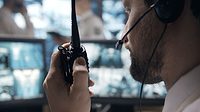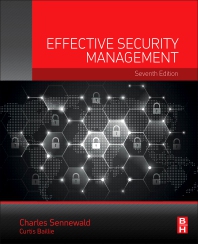Security by the Book
Barnes & Noble's Loss Prevention chief reflects on retail security trends.

Collaborative efforts can be effective when looking at trends like organized crime – issues that reach Barnes and Noble and across the entire breadth of the retail space. For an individual retailer, working at the store level, new technologies also are helping to drive improvements.
Photo courtesy of Barnes and Noble

In a career spanning three decades, Rosamaria Sostilio, Asset Protection VP at Barnes and Noble, has sunk her teeth deep into retail security.
Photo courtesy of Rosamaria Sostilio


Thinking of pocketing a copy of Harry Potter on the sly? As Asset Protection VP at Barnes and Noble, Rosamaria Sostilio will see that doesn’t happen.
In a career spanning three decades, Sostilio has sunk her teeth deep into retail security. Previously she safeguarded couture as SVP of Loss Prevention at Hudson Bay Co. and SVP asset protection at Saks Fifth Avenue. She’s an active player with the National Retail Federation’s loss prevention council and a frequent collaborator with law enforcement officials.
Her philosophy: Look at the big picture; leverage technology; let humans drive security. Here, Sostilio takes us on a deep dive into the emerging trends and winning strategies in retail security today.
Security Reflects Society
After 30 years in the business, Sostilio defines her high-water mark by her involvement with her retail-security peers.
“What’s really been a great thing for me to work on is my work in the National Retail Federation and the Loss Prevention Council,” she says. “I find that to be a highlight in my career, to really get to work with my colleagues at that level.”
Through the council she’s been engaged with high-level trends around loss prevention, from legislative issues to ground-level tactics and strategies. She’s come to view retail security as a reflection of larger social issues.
“The best way to describe what’s going on in loss prevention trends would be to turn on your TV and see what’s going on in the world. You see political rallies, terrorist concerns, the opioid epidemic: All those directly affect retailers,” she says.
More than just a philosophical position, this view of security has direct operational impact. “Stores are located on streets, streets have protests, and we have to protect our customers and make it a welcoming environment for everyone to come in,” she says. “Years ago, we were focused on fire drills. Now we’re focused on preparation for an active shooter.”
Even more profound, she says, has been the evolution within the retail security field itself. From a strategy that focused on perimeter defense, security professionals have grown to embrace a range of more sophisticated tasks.
"When I started, it was about hardening the location. Then it became loss prevention, with a little bit more auditing and other responsibilities. Then it turned into asset protection, and now we’re moving towards complete and total risk. When companies have to do more with less, executives have to be flexible and have to be able to take on more,” she says.
“Working with law enforcement partners is very important. It’s about becoming more of a business partner within your own organization, being much more collaborative – not having a silo approach,” she says.
“Years ago, the security people worked in rooms where they were dark and there were cameras and everything was clandestine and secretive. Now we have to be out there in the organization trying to help people, trying to understand how your organization functions,” she notes.
In practice, a wider reach enables Sostilio to put her hands around some of the big-picture security threats of the day – as for instance the rise of organized retail crime.
Tackling Organized Crime
The NRF and other bodies have been active in encouraging Congress to look at the impact of organized crime in the retail space. While some states have made headway, legislation moves slowly in Washington, D.C. these days, Sostilio says. Still, retail security executives can take other steps while they wait for change at the national level: They can collaborate with each other and with law enforcement to help move the needle.
Sostilio has turned to the Organized Retail Crime Associations, or ORCAs, as a helpful starting point. “We share information, we share pictures, we share losses and patterns and trends,” she says. “One person’s loss can help someone else.”
Through the ORCAs, retail security leaders can collaborate with state and local law enforcement. This can lead to more effective prosecutions and a higher level of deterrence. Collaborative efforts can be effective when looking at trends like organized crime – issues that reach across the entire breadth of the retail space. For an individual retailer, working at the store level, new technologies also are helping to drive improvements.
Digging into Data
Cameras are great and anti-theft tags help too, but when it comes to technology, Sostilio doesn’t obsess over hardware. Rather, she has her attention focused on the rising wave of data as the new front line of retail security.
“Data analytics really is about taking all the points that you work on and combining them together to tell a story and to see where the trends are,” she says. A loss prevention ‘data warehouse’ enables security chiefs to compile and analyze wide tracts of data, in order to get a big-picture sense of LP activities across the enterprise.
Sostilio is keen on putting these analytic tools to use as a way to get more value out of an organization’s video investments.
Demand for video analytic products could top $9 billion by 2025, as security pros leverage these capabilities to glean deeper insights. “You can take your existing video that you’re getting anyway and you do can something with it,” she says. “You can share it with other business partners in the organization, other stakeholders. The ROI is much better for the organization when you can share this information.”
“It’s about listening and exchanging information. Educating each other is really important, and not assuming that someone knows what your intention is or why you want to do something,” she notes.
Security leaders need to make the business case in order to enlist the full support of IT. More often than not, that business case will revolve around the readily-understandable issue that motivates most of the retail LP community: Theft, which costs retailers almost $50 billion a year.
Theft is Eternal
Sostilio approaches theft from the premise that it is and will ever be an inherent part of the retail security landscape. “It’s a problem that’s never going to go away. It’s always around, it will always continue to be around,” she says.
That may sound like a grim assessment, but it’s only a starting point. Working from this position, Sostilio is able to attack theft in a systematic way, piecing together partial and imperfect solutions with an eye toward constant improvement.
“The preventions are almost like thin layers of an onion. There are so many things that you can do,” she says. There are the electronic article surveillance tags, the cameras hung where customers can see them – those things help. But Sostilio said her secret weapon in LP is a creative use of the human element.
“Customer service is the first line of defense,” she adds. “It sounds so basic but it’s so true. When you make eye contact with someone, when you greet them and you let them know that you know that they’re there, that does prevent theft.”
This may sound surprising, coming from someone enamored of wonky solutions like data warehousing and video analytics. While those tools may prove valuable in the long run, she said, retail still must rely on the personal touch as the best defense against shoplifters.
She’s not just talking about security personnel. Sostilio sees all front-line store employees as an integral part of the security apparatus. At Barnes & Noble, “customer service is really what we’re known for and I think is what I’m most proud of in our organization,” she says.
“We have amazing book sellers who know the product. When you go into a Barnes & Noble, which is a place of discovery, you want to be able to touch the product and look at the product. In that moment, the sellers do an outstanding job of connecting with our customers – which doesn’t give them time to steal a product, right?” Sostilio says. “When you’re engaging with someone, walking them over to the book and handing the book over to them, you’re not allowing someone to take the book and run away with it. Sometimes the simplest answer is the best.”
Looking for a reprint of this article?
From high-res PDFs to custom plaques, order your copy today!










